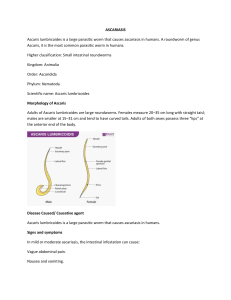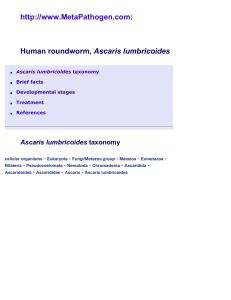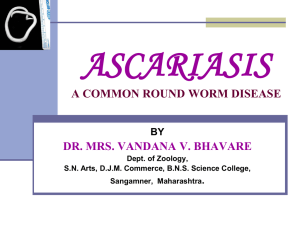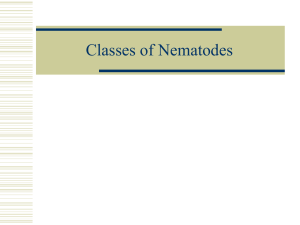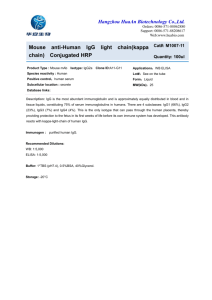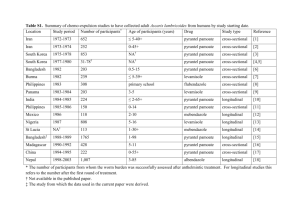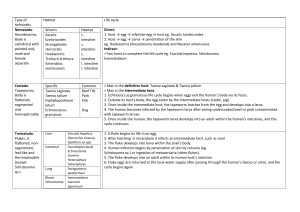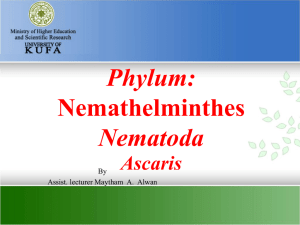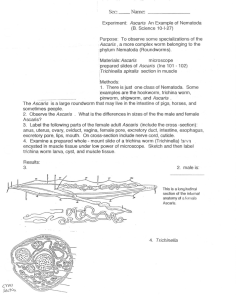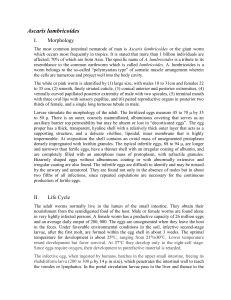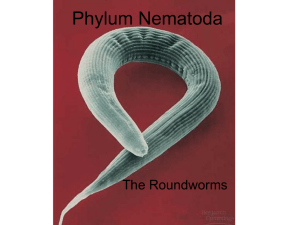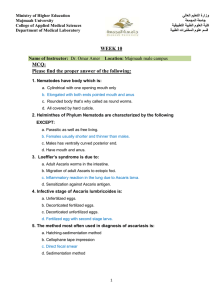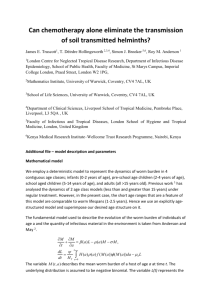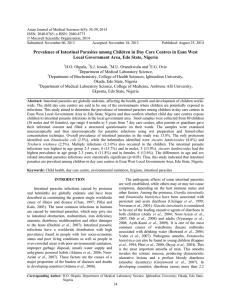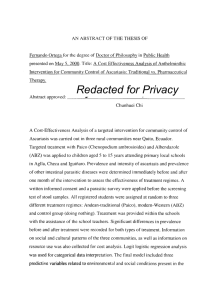Ascaris lumbricoides
advertisement
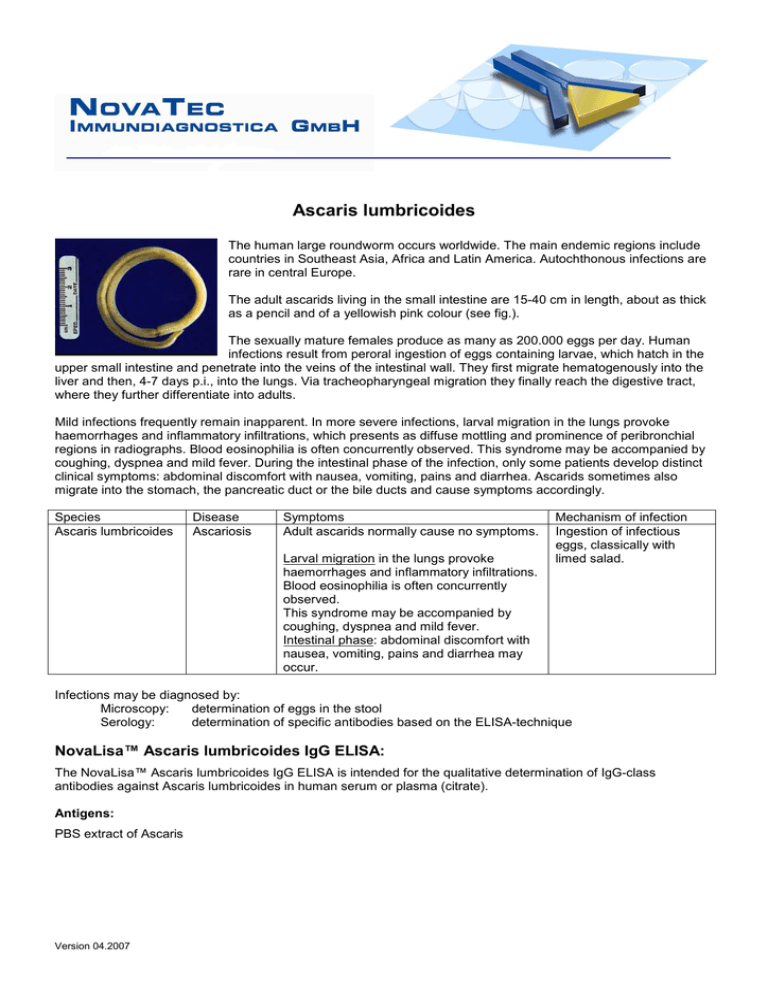
Ascaris lumbricoides The human large roundworm occurs worldwide. The main endemic regions include countries in Southeast Asia, Africa and Latin America. Autochthonous infections are rare in central Europe. The adult ascarids living in the small intestine are 15-40 cm in length, about as thick as a pencil and of a yellowish pink colour (see fig.). The sexually mature females produce as many as 200.000 eggs per day. Human infections result from peroral ingestion of eggs containing larvae, which hatch in the upper small intestine and penetrate into the veins of the intestinal wall. They first migrate hematogenously into the liver and then, 4-7 days p.i., into the lungs. Via tracheopharyngeal migration they finally reach the digestive tract, where they further differentiate into adults. Mild infections frequently remain inapparent. In more severe infections, larval migration in the lungs provoke haemorrhages and inflammatory infiltrations, which presents as diffuse mottling and prominence of peribronchial regions in radiographs. Blood eosinophilia is often concurrently observed. This syndrome may be accompanied by coughing, dyspnea and mild fever. During the intestinal phase of the infection, only some patients develop distinct clinical symptoms: abdominal discomfort with nausea, vomiting, pains and diarrhea. Ascarids sometimes also migrate into the stomach, the pancreatic duct or the bile ducts and cause symptoms accordingly. Species Ascaris lumbricoides Disease Ascariosis Symptoms Adult ascarids normally cause no symptoms. Larval migration in the lungs provoke haemorrhages and inflammatory infiltrations. Blood eosinophilia is often concurrently observed. This syndrome may be accompanied by coughing, dyspnea and mild fever. Intestinal phase: abdominal discomfort with nausea, vomiting, pains and diarrhea may occur. Mechanism of infection Ingestion of infectious eggs, classically with limed salad. Infections may be diagnosed by: Microscopy: determination of eggs in the stool Serology: determination of specific antibodies based on the ELISA-technique NovaLisa™ Ascaris lumbricoides IgG ELISA: The NovaLisa™ Ascaris lumbricoides IgG ELISA is intended for the qualitative determination of IgG-class antibodies against Ascaris lumbricoides in human serum or plasma (citrate). Antigens: PBS extract of Ascaris Version 04.2007 Specific performance characteristics: Interassay IgG Intraassay n Mean CV % n Mean CV % 4 13.58 2.8 8 1.51 2.3 Sensitivity % Specificity % > 95 95 Order information: ELISA Ascaris lumbricoides IgG Version 04.2007 Number of determinations 96 Product number ASCG0020
